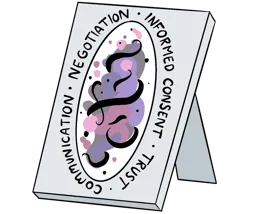Enrol in an online course today for flexible, self-paced learning—no fixed schedule required. Plus, enjoy lifetime access to course materials for convenient revisiting.
What is Cybertrauma?

The world of therapy has changed. In fact, it changed about 27 years ago in a way that some, and perhaps most, have not really caught up with. In this pair of blog pieces, I want to address an area in which our knowledge and training urgently need updating.
You are likely working with many people, whether adults or children, who are currently experiencing cybertrauma. It differs in a number of ways to the corporeal (in the real world) versions you learned about in training. It is changing the types of issues you will be dealing with and the landscape we now work in and through. And of course, all this is occurring in a world where our development, attachment patterns and ways of relating are also being shaped by technology, with devices lowering the number of contingent moments and conversations where right brain to right brain development and containment takes place.
What forms does cybertrauma take?
Cybertrauma is trauma experienced in relation to the internet and other information technology, where material may be recorded, uploaded, downloaded, shared or doctored. This might be material that is self-generated or generated by others, and shared by the individual or by others.
The definition of cybertrauma is constantly evolving, especially with the current advances in immersive tech, and there is an ongoing academic definition on my website. It can include:
- Being sexually abused online
- Watching or being the subject of child sexual abuse and exploitation material (CSAEM)
- Being groomed
- Viewing pornography (especially children)
- Viewing content related to eating disorders, self-harm or suicide
- Viewing content related to animal abuse
- Being the victim of crimes such as cyberflashing, upskirting and downblousing
- Revenge porn
- Stalking
- Trolling
- ID theft
- Hacking
- Cyberbullying
- Terrorism and radicalisation
- Health issues resulting from the influence of posts or propaganda (for instance around Covid vaccines)
- Data breaches
- Online gambling and debt
- Online fraud
The above list is not exhaustive, and does not include trauma related to VR/AR and immersive tech, or all those traumas yet to come in the metaverse.
How does cybertrauma differ from other kinds of trauma?
Cybertrauma exists in a more permanent and revisitable format. We are used to the idea of trauma involving intrusive thoughts and/or memories. But cybertrauma can be continuously re-experienced by the victim, in its original format, unaltered by the recollection errors of the brain and mind.
One example of this is footage of the 911 attack, with homeless people in the US having suffered PTSD through repeated viewing on TVs in shop windows, as Bessel van der Kolk discussed at a PESI UK (then Psychotherapy Excellence) attachment and trauma conference in 2017.
Here are some further differences, which can impact our clients’ healing journeys:
- New details and / or additions can be noticed each time.
- As the client works through the process it can be re-‘sent’ to the victim in varying formats and via various platforms.
- Many people online can bear witness to the trauma in real time or when it resurfaces (repeatedly). This can exacerbate feelings like shame, regret, powerlessness, anger, apathy and victimhood.
- Even tape recordings eventually degrade and fade, but these new formats have no shelf life, and therefore there is potentially no end to the repetition of the trauma.
Cybertrauma – when the sandtray ‘isn’t big enough’
The digital limitlessness of cybertrauma was perfectly expressed by a 14-year-old girl who I worked with back in 2012. We were sat doing sandtray work in my office. She had been bullied at school and was discussing the way in which this had traversed into the digital space. We talked about how she had been named and talked about by the bullies on Twitter.
When I asked my young client to represent this in the sandtray she stopped for a moment and said: “It’s not big enough Cath, it never will be”.
This was one of those moments that rocked my world – and I already had knowledge of digital data, having worked in computing before becoming a psychotherapist. In my next blog, I will try to address the deficit in our trainings and offer some guidance as to how we can start to work with cybertrauma.

















